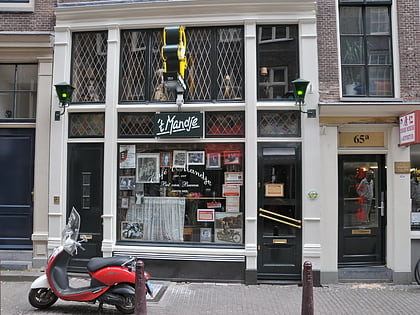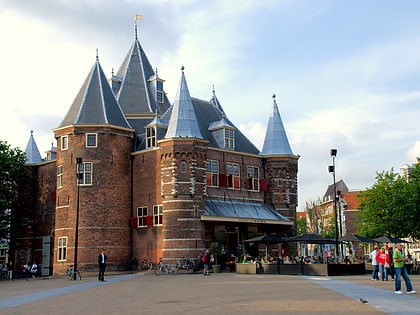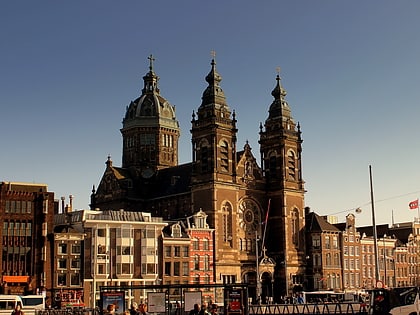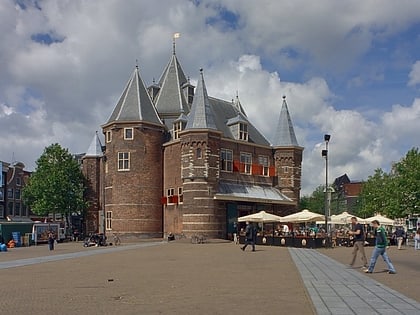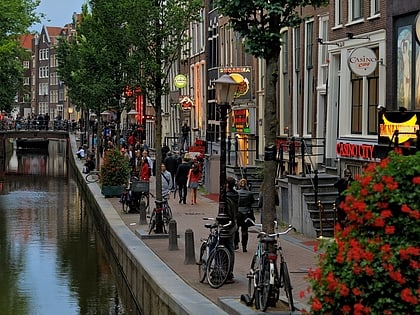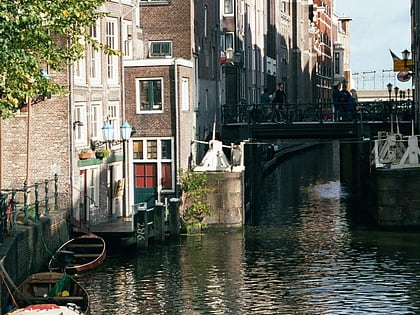Fo Guang Shan Holland, Amsterdam


Facts and practical information
The Fo Guang Shan He Hua Temple of the Fo Guang Shan is a Buddhist temple located on Zeedijk numbers 108 to 116, Amsterdam Chinatown in Amsterdam. The name is pronounced "gguh ggwaa", and means lotus flower in Chinese.
This is the largest temple in Europe built in the traditional Chinese palace style. The complex was designed by a Dutchman, the architect Fred Greven, on behalf of Buddha's Light International Association from Taiwan. This is an organization in Chinese Buddhism. The initiative for the construction was taken by Frank Man, a Chinese-Amsterdam businessman from Hong Kong.
The temple stands on the site of a cellular monastery in the Middle Ages. The last remnants of this convent, Zeedijk 108-112, were demolished in 1944, after the Jewish owners of the two storefronts were deported. The properties 114-118 collapsed later that year. For decades Zeedijk 106-118 was an open spot on the Zeedijk. In the 1950s, a children's playground designed by Aldo van Eyck was built here. When the Zeedijk impoverished two decades later due to the heroin problem, the playground became a popular place for junkies. In 1994 it was decided to build a Buddhist temple on the site. Construction began a few years later with a ground breaking ceremony. On September 15, 2000, the temple was officially opened by Queen Beatrix.
The complex consists of the temple proper, which lies behind a forecourt parallel to the Zeedijk, flanked by buildings intended to form a transition to the Dutch architecture of the rest of the Zeedijk. These buildings house the nuns of the temple and house the library. Zeedijk 118, also part of the complex, is historicizing new construction; the gable top comes from the demolished building Haarlemmer Houttuinen 105.
In the front hall of the temple, called Kuan Yin Shrine, are statues of Sangharama, Guanyin and Skanda.
The main hall contains three separate altars of Ksitigarbha, Sakyamuni Buddha and Guanyin. This hall is located below the Kuan Yin Shrine and is open to visitors only on certain Buddhist holidays, Sundays and on the first and fifteenth days of the Chinese calendar. On these days, classes are held on Buddhism through ancient Buddhist scriptures. Meditation classes are held here on every third Sunday of the month.
The Taiwanese roof tiles turned out not to be resistant to the Dutch climate. Because parts were falling down, the roofing was wrapped in scaffolding cloth by order of the authorities.
There is a big annual celebration of vesak. Many Chinese from all over the Netherlands come to the temple to burn incense for the many Buddhas and Buddhist saints. Also, the statue of Gautama Buddha is carried from the temple in a procession to the Nieuwmarkt. On the Nieuwmarkt there are also stalls with vegetarian snacks and information stalls about the various Buddhist movements.
Stadsdeel Centrum (De Wallen)Amsterdam
Fo Guang Shan Holland – popular in the area (distance from the attraction)
Nearby attractions include: Sexmuseum, Café 't Mandje, Oude Kerk, Ons' Lieve Heer op Solder.
Frequently Asked Questions (FAQ)
Which popular attractions are close to Fo Guang Shan Holland?
How to get to Fo Guang Shan Holland by public transport?
Metro
- Nieuwmarkt • Lines: 51, 53, 54 (5 min walk)
- Centraal Station • Lines: 51, 52, 53, 54 (8 min walk)
Bus
- Prins Hendrikkade • Lines: 22, 305, 306, 314, 316, 391, 394, 43, N01, N04, N14, N86, N91, N92, N93, N94 (6 min walk)
- Nieuwezijds Kolk • Lines: N82, N83, N84, N85, N87, N89, N91, N93, N94 (9 min walk)
Tram
- Dam • Lines: 14, 24, 4 (6 min walk)
- Centraal Station • Lines: 14, 26, 4 (7 min walk)
Train
- Amsterdam Central Station (9 min walk)
Ferry
- Centraal Station • Lines: F2 (10 min walk)
- IJplein • Lines: F2 (17 min walk)

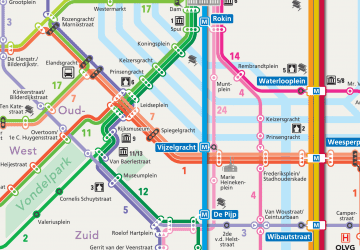 Metro / Trams
Metro / Trams
